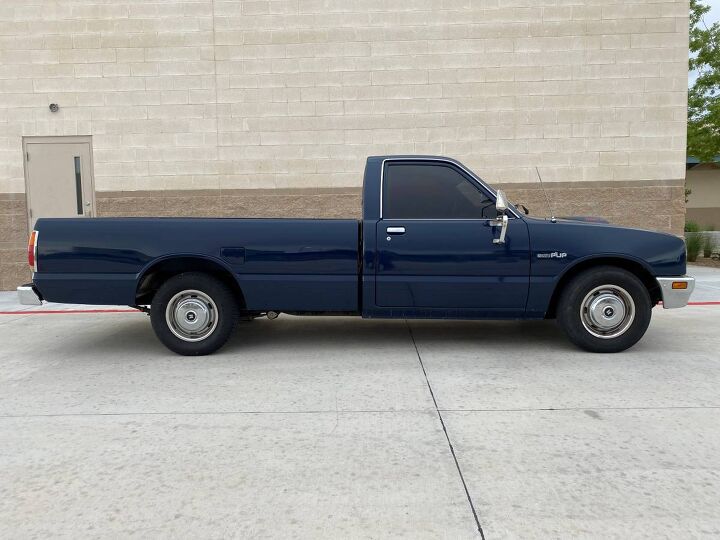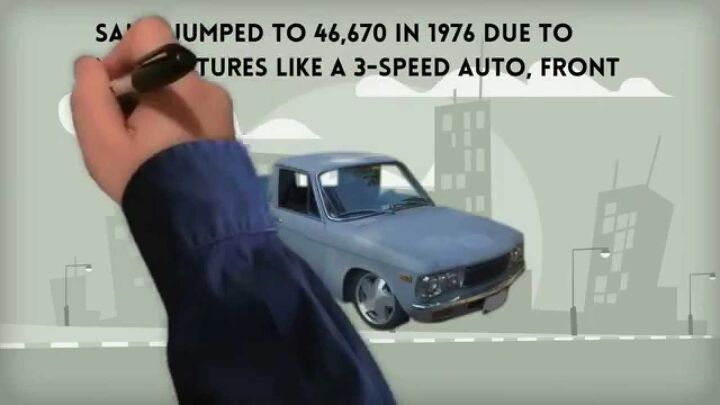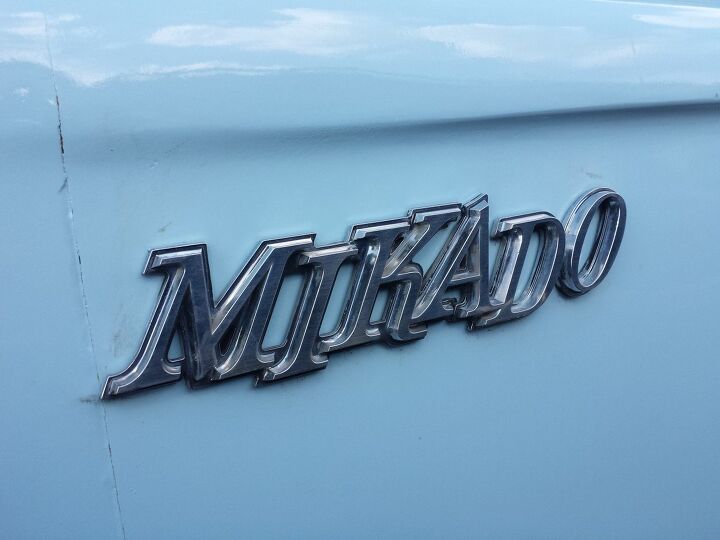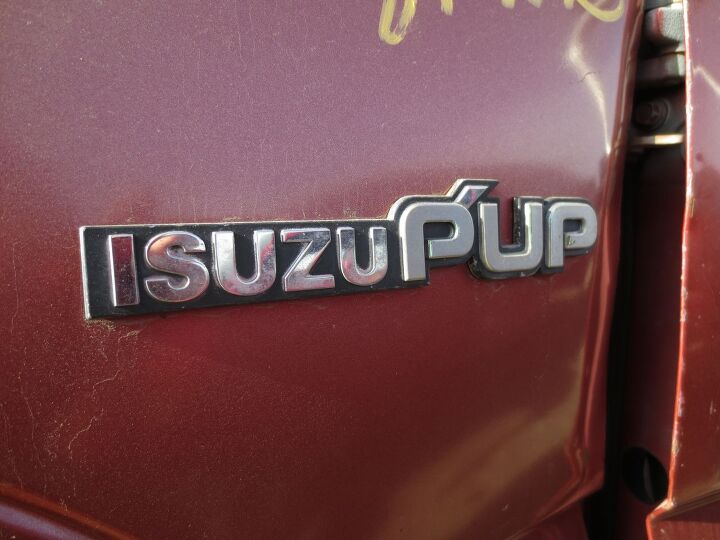#ChevroletLuv
Junkyard Find: 1978 Chevrolet LUV
Small Japanese pickups became increasingly popular in North America as the 1970s went on, with plenty of Hiluxes and 520s/ 620s rolling out of Toyota and Datsun showrooms. Detroit wanted some of that minitruck money, and so each of the Big Three turned to a Japanese partner to make it happen. Today's Junkyard Find is the GM player in that game, found in a self-service boneyard near Reno, Nevada.
Rare Rides: A 1986 Izuzu P'up, Coming With Length and Turbodiesel
Today’s Rare Ride is from the period in the Eighties when many compact pickup trucks were available to the North American consumer. While most of these vehicles were Japanese, some covered their origins with American badges. Others wore both Japanese and American branding, albeit at different dealerships.
Wouldn’t you LUV to check out this P’up? Ugh.
Buy/Drive/Burn: Compact and Captive Pickup Trucks From 1982
In the last edition of Buy/Drive/Burn we pitted three compact pickup trucks from Japan against one another. The year was 1972 — still fairly early in Japan’s truck presence on North American shores. The distant year caused many commenters to shout “We are young!” and then claim a lack of familiarity.
Fine! Today we’ll move it forward a decade, and talk trucks in 1982.
A Selective History Of Minitrucks, Part Two: The Empire Strikes Back, Then Gives Up
In Part One of this minitruckin’ history, we covered how the Big 3 provided their dealers with “captive import” minitrucks from Mazda, Isuzu, and Mitsubishi during the Seventies. By 1975 or thereabouts, both GM and Ford were convinced that the small-pickup market was not a fad and began digging their own products out of the parts bin.
The Chevrolet S-10/GMC S-15 was a sort of truck version of the A-body (later G-body) intermediate. While it’s not dimensionally identical to the older sedans, it’s possible to swap much of the running gear between those two vehicles, particularly ahead of the firewall. The Ford Ranger arrived a few months after the S-10, a few inches smaller in most dimensions and looking remarkably ungainly compared to its sleek GM competitor. Those of you who followed the minitrucking hobby in the Nineties will recall that the Ranger was conspicuous by its absence; “domestic” minitruckers were almost exclusively loyal to the S-10/S-15. Part of that was due to the Twin-I-Beam’s reluctance to accept a lowering kit and/or airbags, but much of it was the Ranger’s hokey, hick-ish appearance compared to the S-10.
So what did that mean for the captive import trucks?
A Selective History of Captive Minitrucks, Part One: When America Couldn't Compete
I was having a conversation with a female friend a few weeks ago and she admitted to having “fooled around” in no fewer than four different brands of minitrucks during the Nineties and Oughties. I suppose in her case that would be the Noughties — but that’s besides the point. I should also mention that the fourth “minitruck” was really a Colorado, and the incident in question happened fairly recently.
“There’s always some kind of stick shift in the way, in those little trucks, you know?” she said.
“Those are the little crosses that empowered young women have to bear,” was my response.
The conversation could have gone in any number of directions from there, but where it actually went was to A Brief Discussion Of Mini-Trucks In America, 1970-2010. I thought it might be a conversation worth having with all of you, as well, because it showcases a rather unique phenomenon in American automotive history.
Junkyard Find: 1979 Chevrolet LUV Mikado
Once Toyota Stouts and Datsun 520s began selling in sufficient numbers (in spite of the Chicken Tax) to attract Detroit’s attention, the idea of selling small pickups— without actually tooling up to build them— seemed appealing to the Big Three. Chrysler had the Mitsubishi-built Plymouth Arrow pickup, Ford had the Mazda-built Courier, and GM had the Isuzu Faster-based Chevy LUV. Each type rusted with great eagerness and were near-disposable cheap, so they’re all very rare today. I see maybe one LUV per three years of junkyard visits, so this ’79 LUV Mikado grabbed my attention right away.
Junkyard Find: 1984 Isuzu P'up
All right, we saw one of the rarest examples of Detroito-Japanese badge-engineering of the 1980s in Sunday’s Junkyard Find— a Chrysler/Mitsubishi truck— and today we’re going to look at GM/Isuzu truck that’s a bit less uncommon (but still not something you see every day): a Chevy LUV wearing its original Isuzu badging.
SsangYong Shows Some LUV
The Chevrolet LUV may have been one of the dorkier car names in the annals of automotive history, but it’s arguably better than the moniker of its Japanese counterpart, the Isuzu Faster. Korean car maker SsangYong’s new truck, the Korando Sports, is being dubbed the “Leisure Utility Vehicle”, and if parent company Mahindra can get their act together, the USA stands a chance of getting some LUV in the future.























Recent Comments